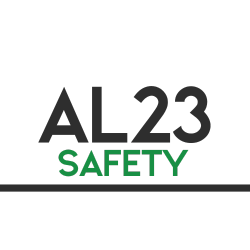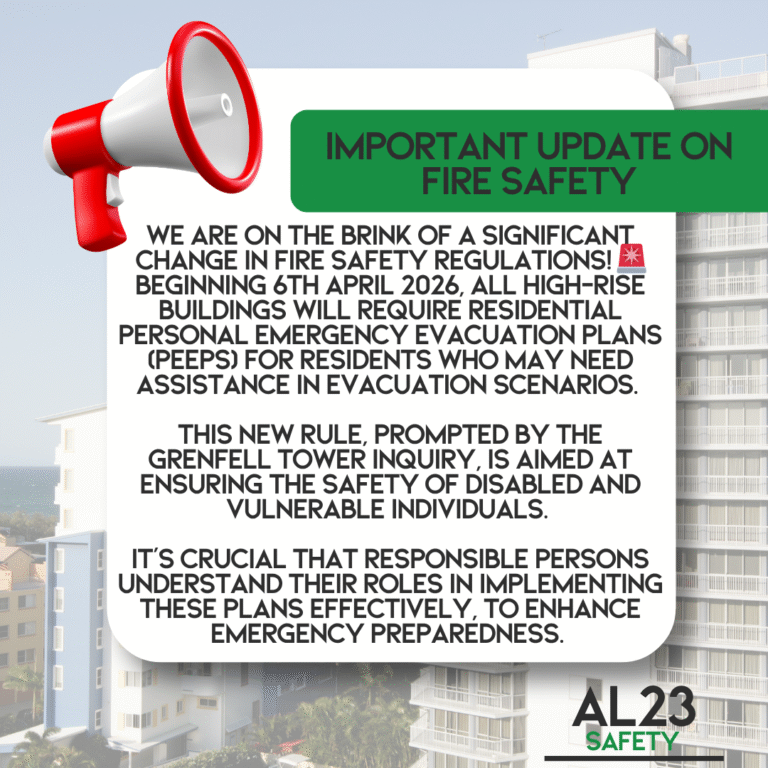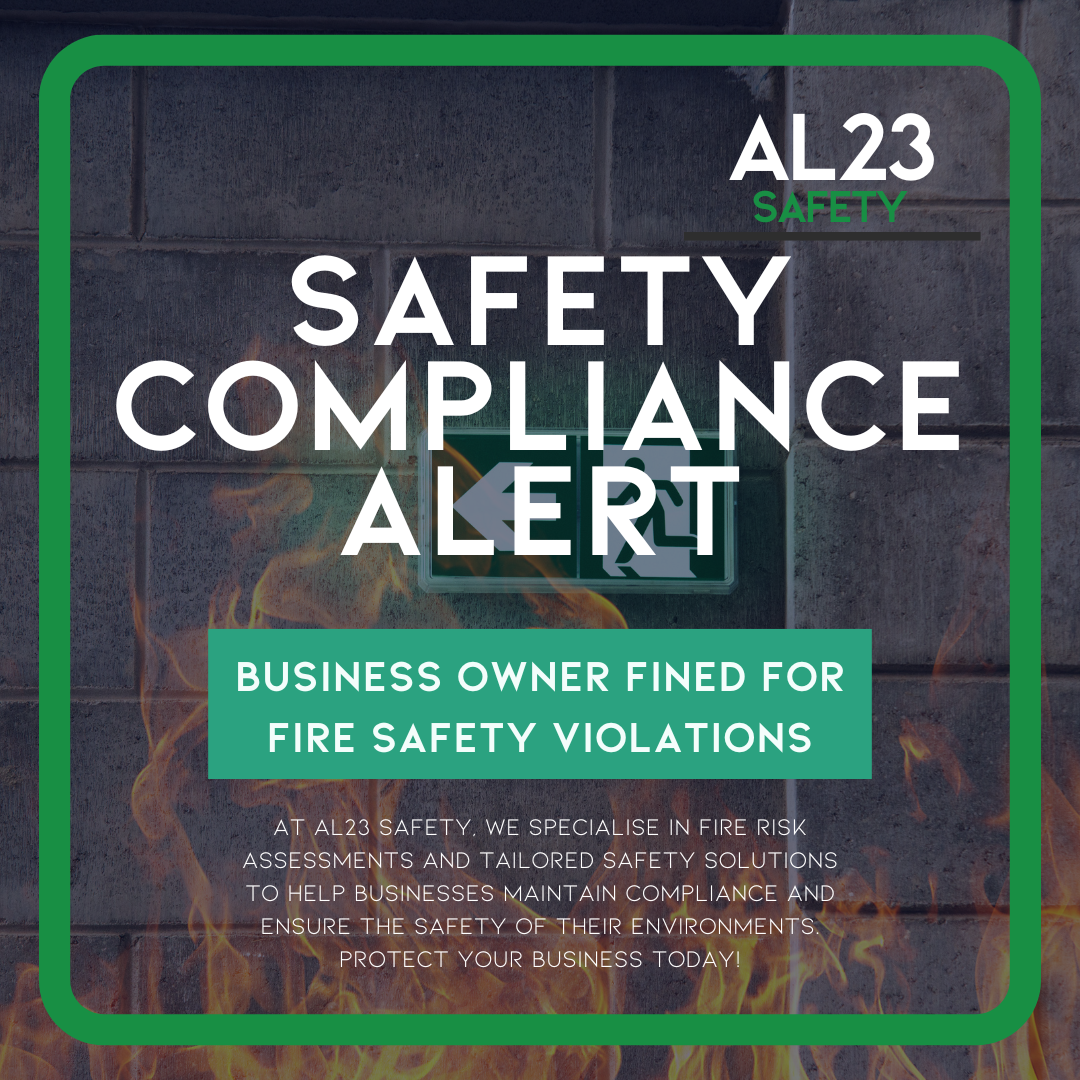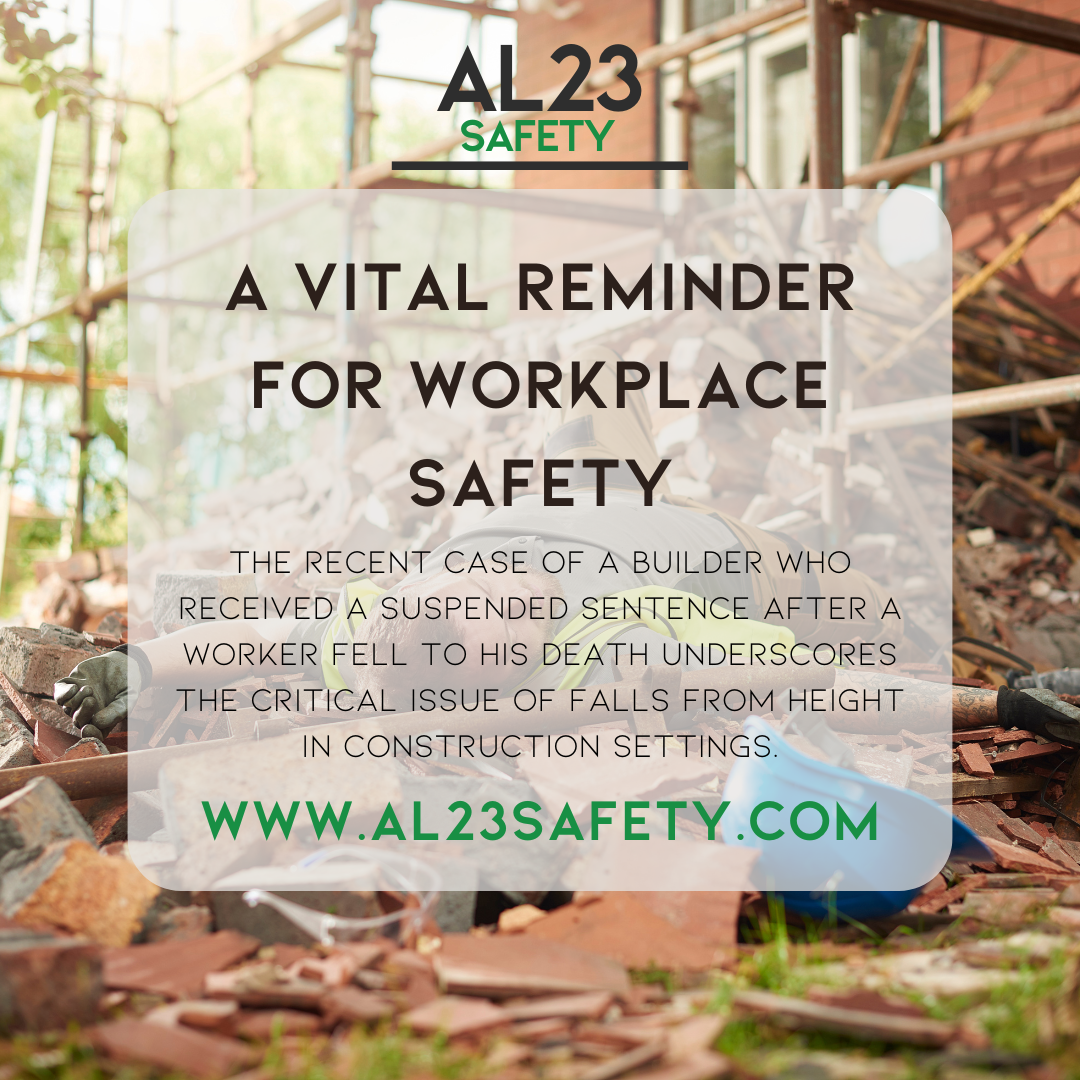Residential PEEPs (Personal Emergency Evacuation Plans) mark a transformative step in fire safety for UK residential buildings, driven by the Fire Safety (Residential Evacuation Plans) (England) Regulations 2025, effective from 6th April 2026. Sparked by the Grenfell Tower Inquiry’s recommendations, these regulations mandate that responsible persons, building owners or managers, support residents with mobility, sensory, or cognitive impairments during emergencies. At AL23 Safety, we specialise in helping property managers implement Residential PEEPs, ensuring compliance with the Regulatory Reform (Fire Safety) Order 2005 and fostering inclusive, safe environments.
The Grenfell tragedy of 2017 exposed critical gaps in evacuation planning, particularly for vulnerable residents, with the inquiry noting that inadequate measures contributed to the loss of 72 lives. Residential PEEPs address these gaps by requiring tailored evacuation strategies for high-rise buildings (over 18 metres) or those using simultaneous evacuation policies. With over 5,200 high-risk buildings still needing remediation in 2025, proactive compliance is urgent. AL23 Safety’s expertise has helped clients reduce fire risks by up to 40% through customised plans. In this blog post, we’ll explore five essential strategies to implement Residential PEEPs effectively, ensuring resident safety and legal compliance.
The Importance of Residential PEEPs in Fire Safety
Residential PEEPs are designed to ensure that all residents, especially those with disabilities, can evacuate safely during a fire. The 2025 regulations require responsible persons to identify vulnerable residents, conduct person-centred fire risk assessments, and develop tailored evacuation plans. This applies to buildings over 18 metres or those with simultaneous evacuation strategies, addressing the Health and Safety Executive Executive (HSE) estimates that fires in residential buildings cause over £1 billion in damages annually, underscoring the critical need for effective evacuation planning. Non-compliance with the Fire Safety Order can lead to fines, as seen in cases like St Lukes (Preston) Ltd, fined £77,000 for fire safety breaches. By implementing Residential PEEPs, building managers not only meet legal obligations but also foster trust and safety among residents, reducing risks and enhancing community resilience.
5 Essential Strategies for Residential PEEPs Compliance
Drawing from the 2025 regulations and our expertise, here are five critical strategies to ensure effective Residential PEEPs and fire safety compliance.
Strategy 1: Identify Residents Needing Residential PEEPs
The regulations mandate identifying residents with mobility, sensory, or cognitive impairments. Residential PEEPs begin with a thorough resident engagement process. AL23 Safety conducts confidential surveys and consultations, ensuring compliance with data protection laws while identifying needs, as demonstrated by a high-rise client who supported 20% of residents with tailored plans.
Strategy 2: Conduct Person-Centred Fire Risk Assessments
Person-centred fire risk assessments are central to Residential PEEPs, evaluating individual risks based on residents’ specific needs. AL23 Safety’s assessments consider factors like mobility aids or hearing impairments, creating bespoke solutions. A residential complex we assisted reduced evacuation times by 30% through targeted risk assessments.
Strategy 3: Develop Tailored Evacuation Strategies
Residential PEEPs require customised evacuation plans, such as assisted routes or buddy systems for vulnerable residents. AL23 Safety designs strategies aligned with building layouts, ensuring accessibility. A social housing client implemented our PEEPs, enabling safe evacuations for elderly residents during a recent drill.
Strategy 4: Share Information with Fire and Rescue Services
The regulations encourage voluntary sharing of PEEPs data with local Fire and Rescue Authorities, with resident consent. AL23 Safety facilitates secure data-sharing protocols, enhancing emergency response coordination. A tower block client improved response times by 25% through our streamlined communication systems.
Strategy 5: Regularly Review and Update Residential PEEPs
Continuous review of PEEPs ensures their effectiveness as resident needs or building conditions change. AL23 Safety conducts periodic audits and drills, keeping plans current. A client maintained compliance for three years without incidents by adopting our review framework.
The AL23 Safety Advantage in Residential PEEPs
AL23 Safety excels in delivering bespoke PEEPs solutions, combining deep knowledge of the Fire Safety Order and Building Safety Act 2022 with practical expertise. Our services include resident identification, person-centred assessments, evacuation planning, and ongoing support, tailored to high-rise and social housing settings. Clients we’ve supported report enhanced resident confidence and full compliance ahead of the April 2026 deadline. With penalties looming for non-compliance, early action is critical.
In conclusion, Residential PEEPs represent a revolutionary step in fire safety, ensuring inclusive evacuation planning for all residents. By adopting these five strategies, building managers can achieve compliance, protect vulnerable residents, and build safer communities. Don’t wait for the 2026 deadline, contact AL23 Safety today to develop your Residential PEEPs and elevate your fire safety standards now.



